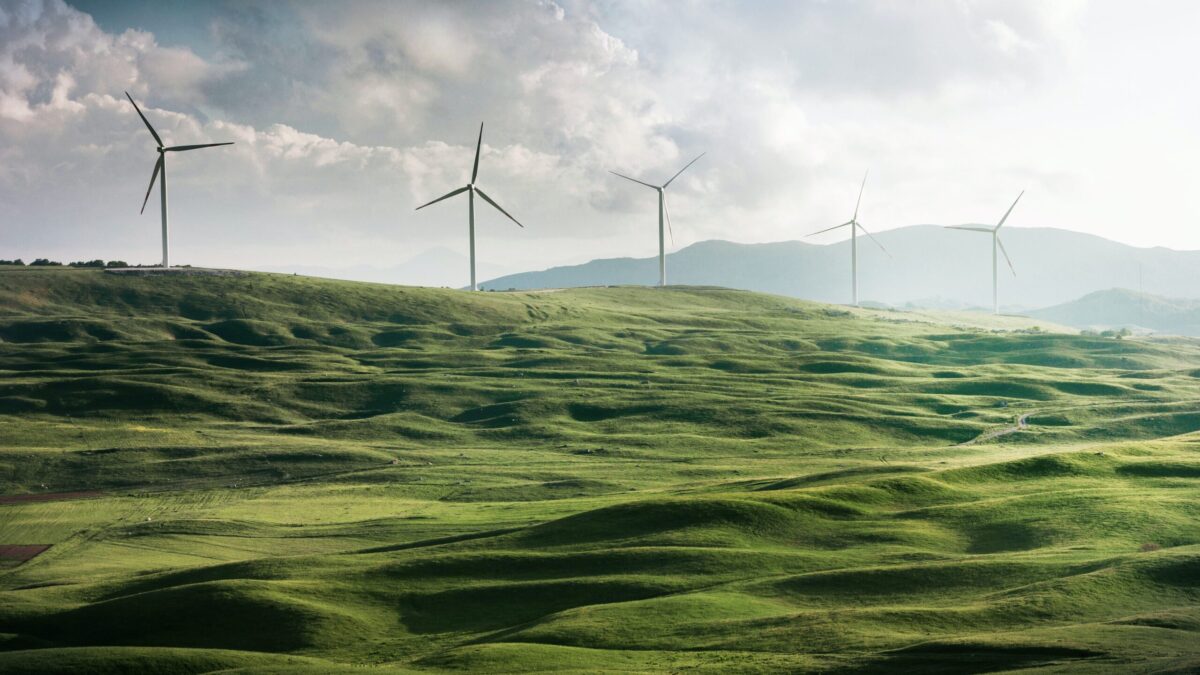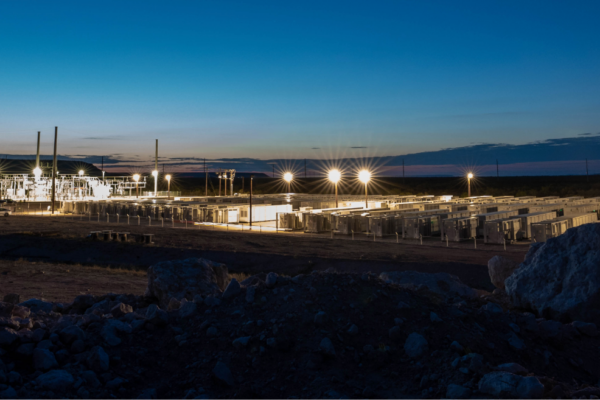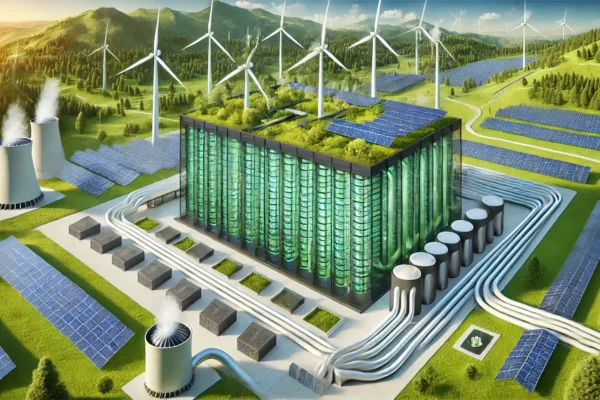This message was loud and clear across CERAWeek, Greenbiz 22, MIT Energy Conference, and BNEF Summit, which we attended this past spring. Global emissions are instead on the rise again post-COVID, with the world on track for 3°C warming by 2100.
Such a trajectory paints a grim outlook, with sentiment akin to the infamous opening chapter of Kim Stanley Robinson’s book The Ministry for the Future, where a colossal heatwave in Northern India kills tens of millions of people in just a week — but we also know that doomsday narratives are equally unproductive for stirring positive action (though great for book sales).
Before we get into our conference takeaways, it’s important to note that these gatherings occurred prior to the US’ passing of the Inflation Reduction Act. Signed by President Biden on August 16, 2022, the IRA outlines deploying $369 billion across clean energy, EV battery production, agriculture, health care, and much more, with the largest spending category in clean electricity, totaling close to $161 billion. This incentive-based legislation is unprecedented in US history and is expected to reduce US GHG by 40% by 2030 — compared with just 26% GHG reductions prior to the legislation.
While this article does not dive into the IRA’s implications (the following article will), it lays out 10 important takeaways from these conferences around the realities, roadblocks, and opportunities for accelerating the clean energy transition, all of which are teeing up our thinking for this year ahead.
Takeaway 1: ESG now means Energy Security Guaranteed.
Russia’s invasion of Ukraine has escalated the importance of secure energy supply to new heights, in addition to highlighting the need to speed up our transition away from fossil fuels. Europe is at the forefront of this, where a perfect storm of events including Russia’s weaponization of fossil gas is presenting a scary scenario for this winter. From supply shortages triggering government rationing and the potential of industries pausing or reducing output, the world is watching how winter will play out in Europe, and how the current energy constraints may accelerate ambition to exceed 2030 emissions targets.
Takeaway 2: Hydrocarbons will be a part of our net zero future.
Gas remains one of the biggest uncertainties in the future energy system. Incumbent oil and gas companies continue advocating for a gradual shift towards cleaner products in the hydrocarbon space, and a slower energy evolution approach that ensures electrification does not fully disrupt their business model. And, while we are proponents of leaping away from fossil fuels in their entirety, we are not there yet. Even in a world with 80% renewables generation, we still need security of supply, which could be provided with emission-free hydrocarbons.
In the interim, the US views methane emissions management as critical, and the OGCI (Oil and Gas Climate Initiative) aims for zero methane by 2030. The story of gas as the transition fuel, however, is reducing in popularity in Europe, which now seeks to radically reduce gas consumption in this decade.
Takeaway 3: Energy access is a billion-person problem – we are not on track for an equitable energy transition.
Nearly 1 billion people in the world still do not have access to electricity — this is a massive humanitarian challenge. And, while many say that access to electricity needs to be a 21st-century human right, this is far from reality. Even more problematic is that many regions experiencing energy insecurity are the most vulnerable to the impacts of climate change, and lack the necessary adaptive community capacity to near-term weather risks.
Challenges in our current energy transition are also deeply interlinked with global housing poverty, and though a kWh (kilowatt-hour) of solar or wind may be cheap, the delivered cost of electricity could increase. Asset-light innovations that improve energy affordability could be a driver of quicker adoption, and with high social impact.
Takeaway 4: Most of the energy transition’s capex will go to the grid.
One of the linchpins to the energy transition in the US is overhauling the power grid. The grid falls short of meeting today’s demands, and therefore certainly cannot meet the needs of a decarbonizing, massively growing industry without huge investment. Significant underinvestment in the grid over the past decades has resulted in a variety of challenging scenarios now to be addressed. Some estimate this overhaul will cost $820 billion of annual global investment by 2030.
This sounds gigantic, but without such investment, the grid will remain a bottleneck to deploying and expanding necessary clean energy projects. A key consideration here is that the nature of grid connectivity today is entirely different than before — with almost all new assets needing to be digitally controllable. Additional opportunities for improving grid resilience through digitalization include:
- Forecast and prediction technologies.
- Simulations to ensure sufficient resilience and capacity on the grid.
- Advances in cybersecurity of energy assets (i.e., protection, detection, prevention).
- Edge control via AI/ML.
Takeaway 5: We must develop and grow the workforce necessary for the energy transition.
Having a robust and relevant workforce is critical to reaching 2030 targets, yet we face a massive gap in appropriately skilled and available talent. Training and mobilizing the energy workforce of the future is a huge challenge, and we need large-scale tactics to develop at the university level and up-skill current talent. Thanks to the passing of the IRA, there has recently been an improvement to this bottleneck. An analysis from the University of Massachusetts Amherst found that IRA’s legislation will create more than 9 million jobs over the next decade, at the pace of nearly 1 million jobs per year.

Takeaway 6: Materials demand for clean technologies is growing exponentially, yet supply chains are constrained. Designing for circularity is more important than ever.
Demand for key materials is projected to grow exponentially with clean energy technologies, which require vastly different inputs than fossil fuels, namely cobalt, nickel, lithium, and manganese. According to IEA, the electric car industry will demand 30 times the amount of nickel, lithium, and other minerals by 2040 to hit global climate targets. Onshore wind power plants also require 9x more mineral resources than a gas-fired plant, yet supply chains for some key minerals are even more geographically concentrated than oil and gas and located in extremely controversial regions.
Innovations in material intensity, designing for circularity from the start, and focusing on closed-loop systems for increased recyclability will be key to pushing us away from the pervasive “mine-manufacture-dispose” model. Materials processing startups like Nth Cycle pose interesting solutions here. Nth Cycle’s “electro-extraction” technology recovers critical metals from batteries (as one example) and transforms them into production-grade feedstocks for clean technologies.
Takeaway 7: Procuring renewable energy remains too hard for buyers.
Corporate demand for clean energy is here and procuring CO2-free energy is one of the first actions companies take to reduce emissions, especially for those in non-energy-intensive industries. However, unanimous comments highlight that procuring clean power is still too hard. Creating frictionless pathways for companies of all sizes (not just the FAANGs of the world) to source and buy renewables is imperative for improving renewable procurement and accessibility.
Takeaway 8: It is time to push the carbon offset market out of its infancy.
The carbon offset market has taken heat for lack of transparency, effective impact measurement, and integrity, though it remains a key enabler of corporate net zero commitments and frontier carbon removal. Arun Majumdar, a professor of mechanical engineering at Stanford highlights,
“Carbon credits need to be verifiable and quantifiable — it will be the key language of intersectoral cooperation and communication necessary for net zero.”
Today’s voluntary carbon markets account for only a very tiny ~0.16 GT CO2 volume, yet according to the Task Force on Scaling Voluntary Carbon Markets (TFSVCM), voluntary carbon markets are expected to grow 7–8x by 2030 (accompanied by price increases).
Takeaway 9: All solutions must be deployed to the maximum, including available technologies while simultaneously investing in those needed as 2050 “insurance policies.”
Though roughly 80% of the technologies needed to hit 2030 goals are currently available, almost 50% of the emissions reductions needed in 2050 will depend on technologies that are not yet commercially available, such as Direct Air Capture (DAC). This paints a “both/and” situation, where we must focus on deploying commercially available technologies faster for 2030 targets, while simultaneously investing in the development of the technologies necessary to meet 2050 targets.
Takeaway 10: Climate adaptation measures are becoming even more critical as we overshoot 1.5°C.
As we overshoot current targets, adaptation to physical, transitional, and behavioral risks is becoming paramount. In this way, we are facing two crises that are two sides of the same coin:
- Tackling the climate crisis at large, and
- Addressing our energy resilience and availability crisis
More than ever, we need “war-like mobilization” to address both of these and to increase preparedness in communities across the globe, especially where local climate adaptation capabilities are inadequate.
The venture community’s role in accelerating the clean energy transition
The climate community has been calling for an urgent and radical shift in our energy system to accelerate the speed and scale of deploying these readily available technologies that are central to the energy transition. And, the recently passed Inflation Reduction Act (IRA) — the largest investment in US history to address climate change — is one such measure.
With a policy measure of this size, the implications on the clean energy transition are vast, including new timelines for scaling clean energy transmission and generation, fast-tracking domestic EV battery and solar production, and the impacts from a slew of newly available incentives for energy infrastructure improvements via repurposing, upgrades, and replacement.
In the following article, we will break down the IRA’s impacts on clean transportation through onshoring EV battery production, providing credits for charging installations, and more. (☀️ + 🔋 + 🔌 + 🚙 = 🙌 🌏)
In the meantime, you can interact with Valo’s research, in our report summary of Princeton University’s ‘Net Zero America.’
Have a great startup? Pitch us at hello@valoventures.org



